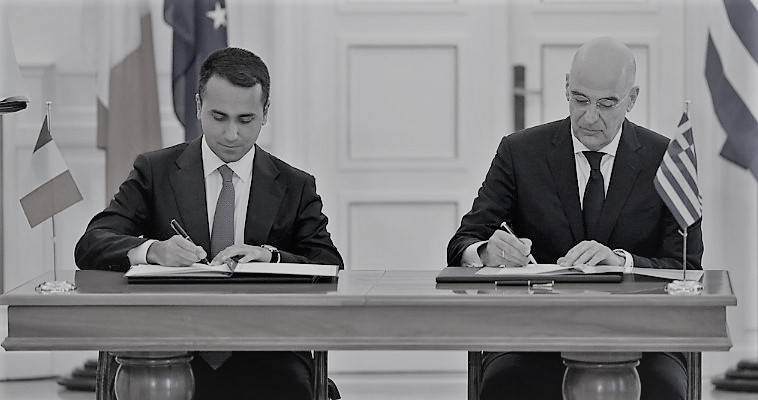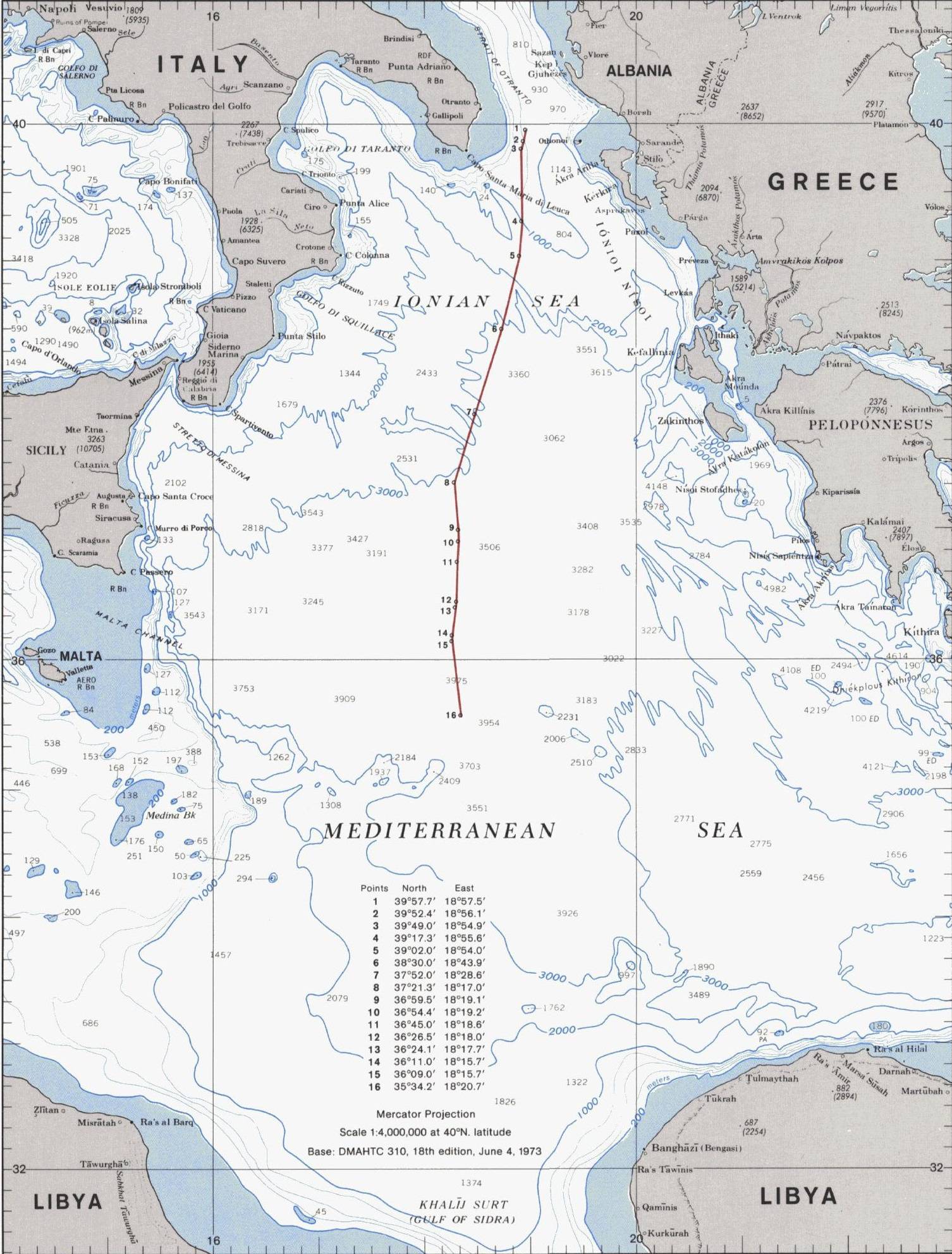Aggelos Syrigos: Greece-Italy EEZ: Myths and reality – The map tells the truth
13/06/2020
In recent days, an intense public discussion has developed regarding the Greece-Italy agreement for the delimitation of the Ionian EEZ. Because public debate is in danger of becoming deleterious, it is important to note the following:
Technical data concerning the demarcation: The demarcation line for the EEZ has a length of 268 nautical miles (496.33 km). It follows the previous demarcation of the continental shelf agreed in 1977. It is based on 16 points starting northwest of the island of Othonoi (point 1) and ending southwest of the Peloponnese (point 16). The sea in this area is very deep.
Apart from the northern part west of Othonoi and Corfu, where the depths are around 800 meters, in the rest of the area the depths range between 3,500 and 4,000 meters. With today’s technology (and low oil prices) the depths are completely prohibitive for exploitation. In the northern part of the border, the shores on both sides are 42 nautical miles (78 km) apart. In the southern part, the Italian coast is 332 nautical miles (615 km) from the Greek coast.
Demarcation method: The demarcation was done on the basis of the middle line which is the main position of Greece (but also of Italy). The demarcation is simplified (hence the 16 points), as was customary at the time the continental shelf was demarcated in 1977.
Impact of islands:
All – and when we say all we mean all – the islands in the area have an impact on the border. In fact, the Greek side of the border has relied solely on islands. This is also evident from the points from which the limit has been drawn:
- Points 1-3 in Othonoi.
- Point 4 on the uninhabited islet of Platia outside the island of Mathraki.
- Point 5 in Corfu.
- Points 6 -10 in Cephalonia.
- Points 11-12 on the uninhabited islet of Agios Ioannis outside Zakynthos.
- Points 13-16 on the island of Stramfani (with a single resident in the 2011 census) of the Strofades complex, which also includes the uninhabited island of Arpia.
It is extremely important that all the islands in the area, including some uninhabited ones, are taken into account in the demarcation. This fact, so far, has not been mentioned in the public debate.
Reduced impact?
In three areas of the boundary line there is a reduced impact. By reduced impact we mean that instead of following the middle line, it has shifted to the detriment of one or the other state. Contrary to what is said, however, the reduced impact concerns both Greece and Italy!
More specifically, we have a reduced impact: First, in the area of Strofades (point 16) where the limit has been shifted to the detriment of Greece by 2.75 nautical miles (3.7 km). Secondly, in the area of Othonoi (point 1) where the limit is 1.4 n.m. (2,600 meters) closer to Othonoi.
However, so far it has not been heard that at points 7 and 8 the limit has been shifted to the detriment of Italy in Calabria from 0.5 nm (900 m) to 2.8 nm (5,200 m) and in favor of Kefalonia. In other words, an island (Kefalonia) appears to have more sea area compared to a mainland coast! In essence, the losses on both sides of Greece and Italy are almost equal on the entire frontier line.
Another limit for continental shelf and another for EEZ?
Another point that has been heard in recent days has been that we would have to negotiate another limit for the EEZ in relation to the 1977 continental shelf limit. Obviously, the problems of having an territorial aerial boundaries of 10 nm and territorial waters of 6nm have not become a lesson learned. Do we want to repeat it in the Ionian? In international practice, the rule is that the EEZ limit follows a pre-existing continental shelf limit. Otherwise, we would be facing a schizophrenic situation, with the EEZ, which includes a continental shelf, and marine waters having a different limit than the continental shelf!
Turkey and Greece
For the second time in a short while, it is clear that the Turks are closely monitoring what is happening inside the country (the first time was during the events that preceded the three days of Holy Monday in Evros). Cavusoglu’s comments on the agreement were snippets fo what was being heard in the Greek public debate.
From now on, let’s be a little more careful about what we say because others are listening in.






